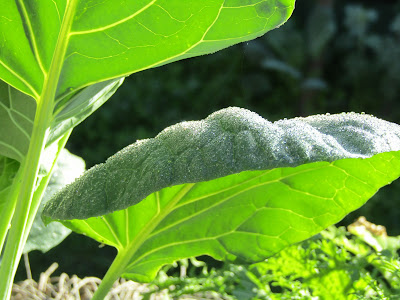When it's not there any more, we fully appreciate the glue that became our daily ritual. Binding one, inexplicably, to the other. This is the whole point of this post. It's not necessarily about losing our cat.
Native Brush Turkey
It's about learning to recognise a profound absence in our existence. Which is difficult to do, if we're not practicing a daily ritual of interconnected living, with other elements. We associate easily to the animals we bring into our lives, but what about those native animals, living on the periphery?
Or the living things, we don't necessarily associate to being sentient? Like plants, microorganisms and water. Do we practice a daily connection to these things? Do we contemplate the roots underground, before we anticipate the crop of fruit we hope to consume?
Native eucalyptus trees
I would like to draw upon some of my indigenous ancestry, to consider a less European, point of view. Aboriginal society selectively desired things in nature, over and above advancing their communities, through agriculture. As noted by K Langloh Parker, in 1905, where she wrote about, The Euahlayi Tribe. The introduction was written by a man, and from it, he says:
"...the natives of the Australian continent are probably the most backward of mankind, having no agriculture, no domestic animals, and no knowledge of metal-working. Their weapons and implements are of wood, stone, and bone, and they have not even the rudest kind of pottery."
From a European perspective, the original inhabitants were considered backward. Because European stories of origin, emerged from dominion over landscape and animals. Dominion, until the next outbreak of famine and disease, forced a treaty with the natural order again. But the problem with civilisations, based on conquering, is they simply got on a boat, found another unadulterated paradise, to start the whole process again.
European origin stories, inevitably found fault with different rulers, different segments of society, and even the natural elements. But never the civilisation's themselves, for having a perverse view of what constitutes a natural birthright.
Native Red Grevillea flower
Let's consider how the original inhabitants of Australia, came to survive with such rudimentary tools, without agriculture. They formed, incredibly sensitive relationships, to their natural environment. Culture emerged from land, animals and people, being interwoven - rather than separated.
The good news is, we don't have to mimic a primitive existence, verbatim, in order to connect better to living things. A more agricultural existence - versus hunter gatherer - or using more sophisticated tools, is not an exclusive question, of ONE domain to rule them all. We do fail however, by not practicing a daily ritual with living elements, as a vital imperative. Because it's our natural inheritance in the environment, which steers us away from unnatural tendencies, towards destruction.
I say, unnatural, because we were given brains with the capacity to decipher conscience and choice, for a reason. We were made to decipher value in what we do, beyond instinct.
Native grass and Westringia bush, with exotic in background
Therefore, it's unnatural to ignore the effects of our global civilization, and passing it off as merely survival. Anyone feeling that tug of conscience, to return to the soil, is yearning to be connected with their natural inheritance again.
We come from the soil, and we will return to become soil again. So we should value what's taken from it, and what goes into it. By practicing that daily connection, we start to observe how we can effect change in our behavour, in positive ways. Change is necessary, if we hope to contribute something meaningful, back into our environment again.
The key is: something meaningful. If all we do, is directly about benefiting us, and not those existing on the periphery, it's easy to fall into the trap that we're more important in the natural order. Sharing, is a meaningful contribution.
Lavender for bees, and bromeliads for amphibians & lizards
So in your garden, plant food for the native animals, as well as food for yourself. Build habitat which connects different areas together. Learn to tolerate more intrusion, into your man-made zones, with wild zones. Because it's a treaty, not outright surrender. Use the natural resources in your garden, with the intent to return a surplus. Rather than stripping away parts, and having it dumped someplace else. And if given the opportunity, teach a child (yours or someone else's) to do the same.
This is how the Aboriginal people of Australia, got to reproduce their gene pool for up to 70,000 years. There is something to the process, of accepting the land given, is worth nurturing as part of the collective identity. I may garden for my family and I, but what I leave behind, will be what contributes to a far bigger picture.
Imagine all our gardens, connected together. Where migration of living organisms, becomes a vital imperative to who we are, and our children's future. It's more than survival. We're connecting to a living environment, and choosing respect for it. That is a choice worth duplicating, in our civilisation today.
How do you enjoy practicing connection, in your landscape? It can be at home, or beyond.




























